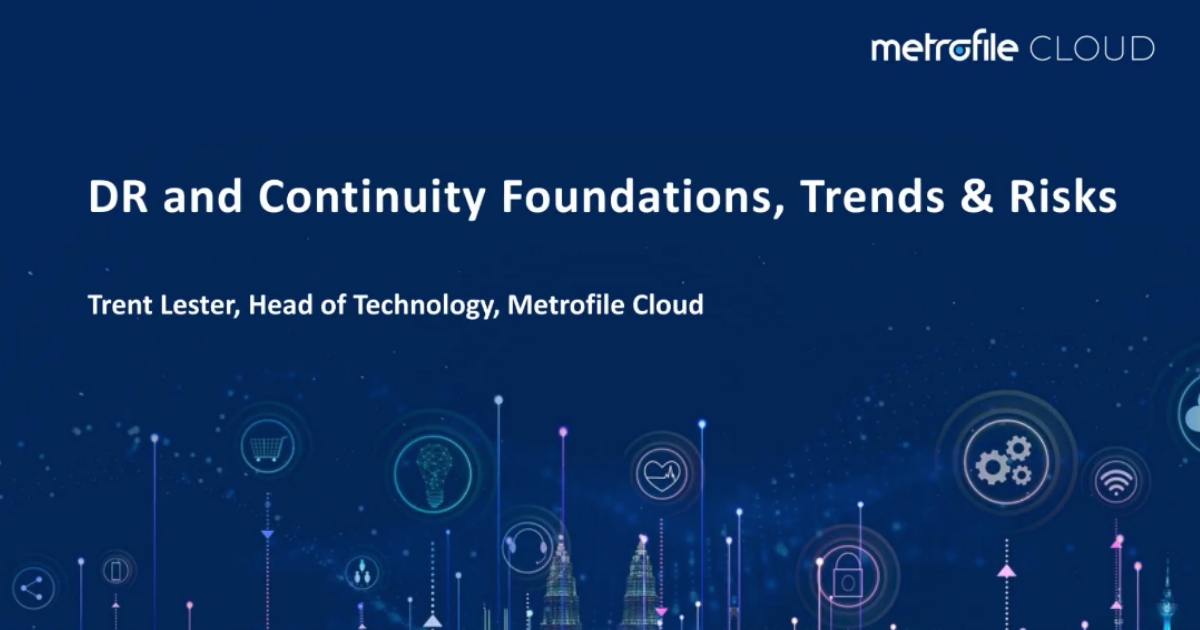We know that data has become one of the most valuable assets a business owns. While data backups are crucial, they are only one piece of the larger business continuity puzzle. Disaster Recovery as a Service (DRaaS) ensures that businesses can quickly recover and continue operations after disruptions like cyberattacks, hardware failures, or natural disasters.
Backup vs. Disaster Recovery: What’s the Difference?
Many organisations confuse data backup with disaster recovery. While both serve critical roles, they are not interchangeable.
- Backup is about creating copies of data and storing them securely. It helps businesses recover lost files, protect against ransomware, and meet compliance requirements. However, backups alone do not ensure rapid recovery of full business operations.
- Disaster Recovery (DR) is a more comprehensive approach. It not only involves data backups but also includes the infrastructure, configurations, and systems necessary to restore operations with minimal downtime. DR solutions ensure that applications and workloads are available when needed, making them essential for business continuity.
Common Disaster Recovery Methods
Depending on their needs, businesses can choose from different disaster recovery models:
- Simple Backup to Cloud Storage – This is the most basic and cost-effective approach. Businesses store their critical data in cloud storage following best practices like the 3-2-1 backup rule (three copies of data, two stored locally, one offsite in the cloud). However, while this model provides data protection, recovery times can be lengthy, and it lacks automation.
- Periodic Replication – This method improves upon simple backups by using automated snapshots of systems and applications, replicating them at regular intervals to a disaster recovery location. This model offers faster recovery than basic backups and is well-suited for mid-sized to large businesses with moderate recovery time objectives (RTOs).
- Active Standby – The most advanced and fastest recovery model. This solution involves near real-time replication of critical workloads, minimising data loss and downtime. While highly effective, it requires more investment and is usually deployed by enterprises with stringent uptime requirements.
The Role of DRaaS in Disaster Recovery
DRaaS takes disaster recovery a step further by offering a fully managed service that businesses can rely on without having to invest in their own backup and recovery infrastructure. By partnering with a DRaaS provider, businesses gain:
- Scalability – The ability to scale DR capabilities as business needs evolve.
- Automation – Streamlined failover and failback processes.
- Security and Compliance – DRaaS providers operate in highly secure, compliant environments with redundant infrastructure to ensure reliability.
- Cost Efficiency – No need for businesses to invest in secondary data centers or complex DR setups.

Where S3 Object Storage Fits Into Disaster Recovery
S3 Object Storage plays a critical role in tiered data storage strategies within backup and disaster recovery. Organisations can retain recent backups locally for quick access, move older data to the cloud, and then archive long-term data in S3 storage.
Think of S3 as a giant online storage unit where data is stored in buckets or folders. It is designed for high reliability, with built-in redundancy and uptime considerations. S3 is also cost-effective, available in affordable packages, and follows a pay-as-you-go model, making it a flexible solution for businesses looking to optimise their backup and recovery strategies.
A solid disaster recovery plan goes beyond simple backups. DRaaS provides businesses with the confidence that they can recover quickly from disruptions, ensuring business continuity and operational resilience. With the added power of S3 Object Storage, companies can implement scalable, cost-efficient, and secure disaster recovery strategies.
By combining DRaaS with S3 storage solutions, businesses can protect their critical data, reduce downtime, and ensure long-term sustainability in an increasingly data-driven world.








